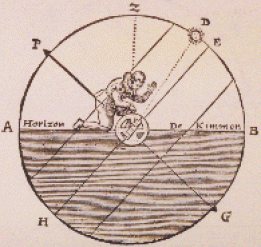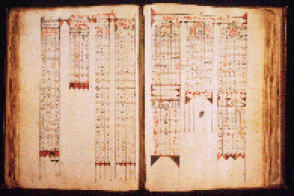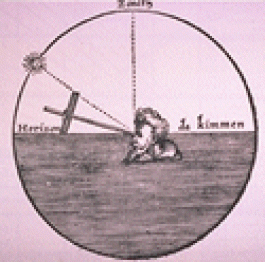Illustration of Astrolabe

In the illustration here, from The Light of Navigation (1612) by Willem Jansz Blaeu, line P-G is the angle of the axis of the earth at the time the celestial observation is made; this angle taken from astronomical tables. Z equals zenith, and D is the observed altitude of the sun. To obtain a noon position fix from the sun at its meridian passage, the observed altitude of the sun is subtracted from 90° and the declination of the sun is added algebraically to the result.
Astronomical Tables

Abraham ben Samuel Zacuto was personally consulted by Vasco da Gama before he undertook his voyage around the Cape of Good Hope to Calicut, India. In this mural painting by Amshewitz, Zacuto is shown presenting his astronomical tables to Vasco Da Gama before his departure from Lisbon in 1497. unfornately we have very less info about these tables
Illustrations

Obtaining measurements of the angular height of a celestial body above the horizon is not difficult, as attested to by the early development of the cross-staff, back-staff, and marine astrolabe. The real problem lies in being able to achieve this with great accuracy, and under the difficult conditions of being at sea on a small boat.
